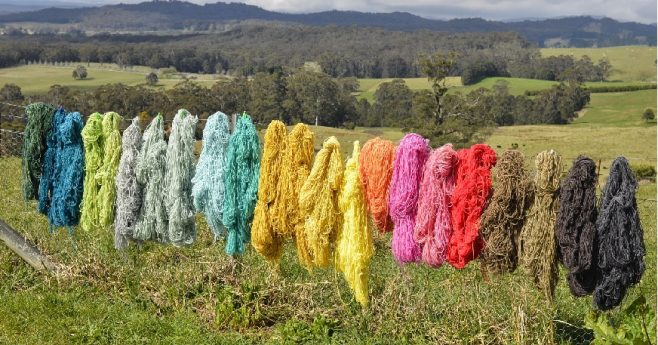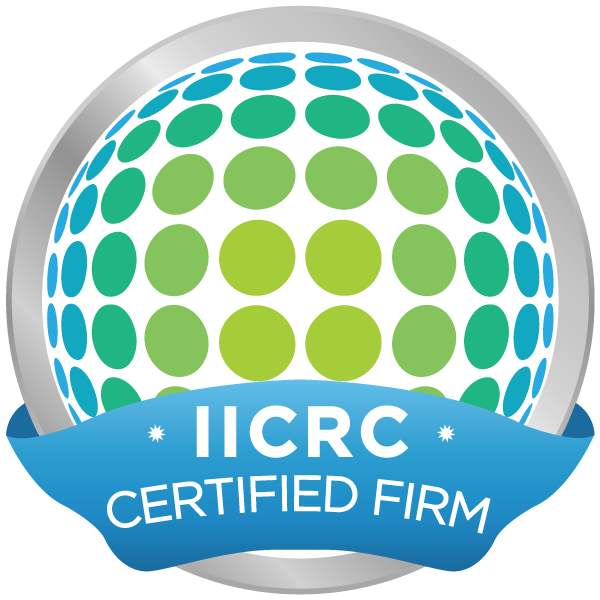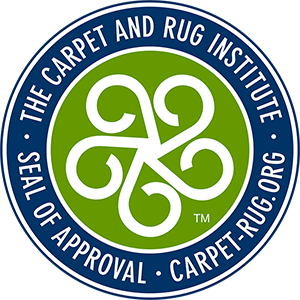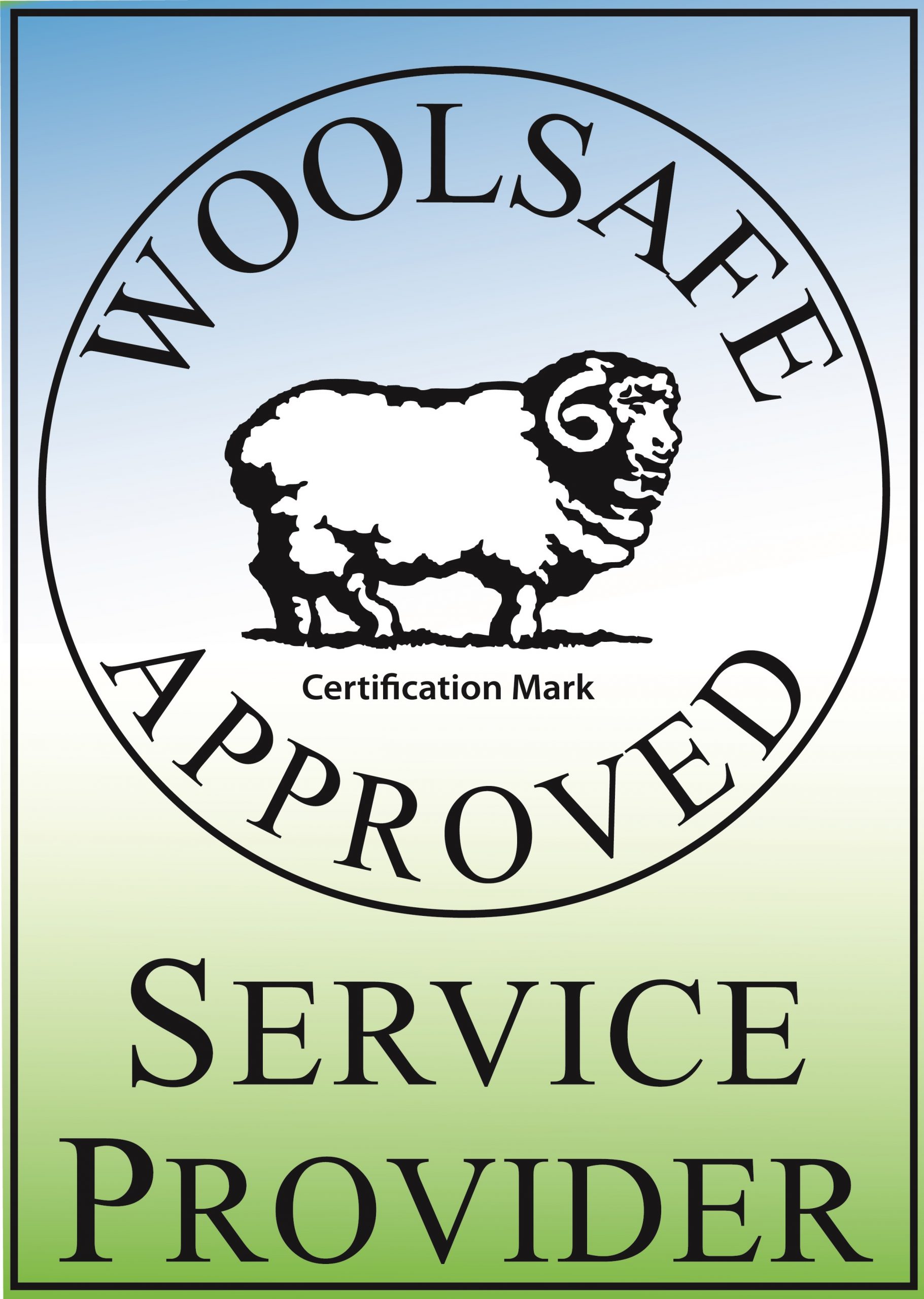Oriental And Persian Rug Cleaning – What You Need To Know SW Florida
 Wool Recently Dyed In The Curing Stages
Wool Recently Dyed In The Curing Stages
The following article was written by Lisa Wagner, a second-generation rug care expert, NIRC Certified Rug Specialist and an owner of K. Blatchford”s San Diego Rug Cleaning Company. She was recognized as the 2006 Cleanfax magazine Person of the Year for her industry contributions.
Rugs should be regularly cleaned. But not cleaned in the home.
“Why not? There are two main reasons.
The first is that you are not getting the rug thoroughly cleaned, and the second is that — in most cases — you are causing long-term damage to those woven textiles.
I receive, on a weekly basis, technical help requests from cleaners or insurance case help requests from adjusters regarding damaged rugs.
The rugs involved range in value from $100 to $100,000. The cause of the problems inevitably comes down to a lack of knowledge about the rugs being cleaned and how to clean them properly.
More rug disasters occur from cleaners treating natural fiber woven rugs like synthetic installed wall-to-wall carpet than anything else. They are using the wrong cleaning techniques, tools and solutions for wool, silk, cotton or rayon rugs.
Most carpet cleaning professionals I know are quality and service conscious. They want to do the best for their clients and give the best care for their client’s belongings.
They clean the rugs on-site because many simply do not understand the truth about on-site rug cleaning, that it often does more harm than good to woven rugs.
No dusting
When a cleaner does not pre-vacuum before cleaning a room of carpet with hot water extraction, many insist the power of their equipment makes that step not really necessary.
When a cleaner does not dust a rug before cleaning it in the home, they are not really cleaning it because most of the embedded soil is not being removed with their process.
A wool woven rug can hold pounds of soil and grit before it begins to look dirty. Those of us who operate rug cleaning plants will always shock our clients when we show them how much dirt we can shake and beat out of their rug before cleaning it.
This is a critical step in rug cleaning that is missed with on location rug cleaning because this soil needs to be beaten and shaken out of the foundation fibers, and not simply run over the top with a vacuum cleaner.
When this soil is left behind, and the moisture from the cleaning process is added, the grit that is nudged between the warps and wefts of the rug essentially becomes mud into those cotton foundation fibers.
Because on-site rug cleaners are usually more worried about getting the rug too wet for too long instead of getting it really clean, they end up only cleaning the surface of the rug’s fibers and leave a mix of soil and chemical residue behind throughout the foundation of the rug.
If they choose to use encapsulation products to try to remove the “grey look” that their cleaning created — due to remaining embedded soil at the base of the wool fibers — they end up leaving even more residue now at the top of those fibers as well.
Resoiling is now almost guaranteed.
In more serious cases, because the embedded soil can have a drying effect to the cotton foundation fibers, this can lead to brittleness, something like “dry rot,” where warps and wefts can crack and break. The rug begins to feel stiff to handle and then eventually falls apart from the inside out.
There is a better way and a best way to approach this challenge.
Better way: Rugs that are being surface cleaned absolutely need to be dusted to get as much soil as possible out before it gets wet. While you cannot create a dusting area in a client’s home with your beater bar vacuum or professional duster, you can in your office or garage mini-plant. Beating the dry soil out of the rug prior to your off-site surface cleaning dramatically improves what you would have done on-site.
Best way: Rugs brought to a rug washing plant will have the most soil removed. Whether the dusting method is accomplished with a commercial vacuum, professional duster, compressed air, giant tumbler, etc., rug plants have the equipment and labor to get more soil out prior to cleaning. And the washing method, whether by wash pit or an inclined wash floor, through fully saturating the rug, will loosen up and flush out even more soil than the dusting could have ever reached otherwise.
No rinsing
When cleaning a rug in the home, usually the “top of mind” concerns are to avoid bleeding the dyes and to not create any problems with the flooring underneath the rug.
This usually leads to a quicker cleaning to “freshen up” the rug with little or, in the worst cases, no rinsing.
Besides the obvious problem of the rug not being clean, there are additional problems with measurable residue being left behind, especially in natural fiber rugs.
If the rug is colorful, then a dye stabilizing product will generally be applied to the rug, brushed in a bit and left to dwell. Then the cleaning solution is added and extracted, leaving behind some additional residue along with that dye stabilizing solution. Then, if a fiber rinse is used, many of which, in the carpet cleaning lines of chemicals, have added surfactants, this leaves behind residue as well.
No matter what the steps, measurable soil and solution residue is being left behind in the rug. And if the residue is on the alkaline side on a wool rug, this can lead to yellowing, fading and future dye migration problems with a rug’s acid dyes.
There is a better way and a best way to approach this challenge.
Better way: Rugs being surface cleaned off-site can be rinsed more thoroughly due to the ability to use a pure (no surfactants added) acid rinse to remove more residue from the fibers. Cleaning off-site allows you to use rinsing solutions you can’t use in the home, either due to odor or possible damage to the floors, and allows you to spend more time rinsing because you have a better setup for drying the rug out completely.
Best way: Rug washing is the best way to remove the most residue, in addition to any other additional soil that has been released from within the warps and wefts during the cleaning process. With the rug either placed on elevating tiles in a wash pit, or with hoses running from behind the rug on an inclined wash floor, you can flush water through the back to the front of the rug and with the use of a squeegee, linoleum roller or pressure washer rinse the rug thoroughly until the water runs clear. Pure acid rinse solutions are mixed and ready to use if additional residue removal is needed, and large water removal equipment (such as a rug wringer or rug spinner) allows you to remove the most excess moisture before placing the rugs in the rug drying area.
No fringe cleaning
The fringe is the smile of a rug. A person could have a perfectly clean face, and if they smile and reveal brown or black teeth, it stops you dead in your tracks.
Often a rug is considered “dirty” by an owner when the cotton fringes are visibly soiled. Wool face fibers can hide pounds of soil and still look “good,” but cotton does not work the same way. There is no place to hide the soil on those cotton tassels.
Quickly surface cleaning cotton fringe tassels will not get them clean. That’s like having soiled shoelaces and taking a damp rag to wipe them down and expect them to look better. They don’t.
Fringe requires scrubbing to get them clean, using a cotton or all-fiber shampoo, and rinsing to remove as much residue as possible. It takes time. Most cleaners who choose to clean rugs in the home do not even bother to touch the fringe because they don’t have the time or the tools to do it properly.
So you usually end up with a rug that looks a bit better in the field, but has that grimy “smile” to it along the ends.
There is a better way and a best way to approach this challenge.
Better way: Getting fringe tassels to look really good is a huge challenge — the biggest challenge I hear from cleaners. Many clients wait too long to get their rugs cleaned, so soil is ground into those cotton strands. Off-site surface cleaning can give an opportunity to sit and scrub those fringes clean, and use some stronger temperatures, or solutions, to help release the ground in soil.
Best way: The wash process itself soaks the tassels and releases soil during the immersion; the agitation of the scrubbing (rotary or hand brushes), with a thorough rinsing of the entire rug, also gets the fringe tassels much cleaner. Fringe bleach can be used (carefully) if whitening is needed after the cleaning. And if the fringe is especially bad, most rug plants offer fringe replacement for those who waited much too long to get their rug cleaned.
No time
When a cleaner is in the home cleaning a rug, he usually has another job to go to — or several.
Since the fee is based by size, not time, the faster the job can be accomplished, the more profitable it is to him. No time to worry about dry time, or fringe cleaning, or if the rug might bleed during the drying stage. And if the rug is wool, which does smell a bit like a “wet dog” when damp, it’s another reason to not get it too wet.
It’s to the on-location cleaner’s advantage to not do “too much” to rugs and get out of there as quickly as possible (before anything bad happens).
The fewer steps, the better, especially if the cleaner has limited knowledge about Oriental rugs, and whether the rug they are working on is worth a hundred dollars or worth thousands. There’s a tendency to just get it done quick, get paid and get out of there.
The rug could be left with soil embedded in its foundation, sticky residue in the fibers, dirty fringe, and then the client handed a bill for “cleaning” a rug that is actually still dirty.
There is a better way and a best way to approach this challenge.
Better way: Doing surface cleaning off-site allows a cleaner to spend more time being thorough with specific cleaning steps and use better tools and solutions. If anything does go wrong, it also gives an opportunity to correct the problem. Having a disaster happen on location with a rug, in most cases, means the cleaner has “bought it.” A cleaner can take the needed time if the work is done off-site.
Best way: The limitation with a mini-plant is that you often are able to work on just one rug at a time during the day due to space and if you are an owner-operator, labor. A dedicated rug plant will have the resources to handle more volume while also allowing the time needed to achieve the best results. There will be dedicated areas for specific phases of the rug cleaning process in a rug plant, as opposed to having to do all of the steps in one small area. If more time is needed on a particular rug, it does not create a backlog preventing other rugs from being cleaned. You can take the time you need to in order to do the job right.
Do what’s best for the rug
I often hear from carpet cleaners that their clients don’t want their rugs taken out for cleaning, or they won’t allow their rugs to go out for cleaning — and that is why they clean on-location.
That is a cop-out. And that is absolutely not cleaning.
If a rug owner is educated on the reasons why wool rugs are different than installed synthetic carpet, and why surface cleaning on-site not only leaves behind soil and suds, but also can create damage, most will do what is best for the rug.
Our business refuses to do on-site cleaning because the recommended method for cleaning woven rugs is washing them. I can’t remember a single time when a rug client of ours has refused to have their rug taken out to be properly cleaned. Even hotels send their rugs out for cleaning.
If a cleaner gives in to cleaning a rug on-site, then it is the responsibility of that cleaner to inform the owner of the limitations and potential damage that can occur, and to protect his or her cleaning company by getting a release of liability because the homeowner is choosing a method that carries short and long-term risks to it.
If something goes wrong, it is the cleaner who will be expected to replace the rug. However, if you are being asked to do something against accepted industry standards for woven rugs, the risk should be placed right back on the homeowner. That’s only fair.
When it comes right down to it, it is the professional cleaner’s role to advise on and execute the best cleaning process for the health and welfare of the home environment and its valued contents.
When professional cleaners relinquish all cleaning decisions and direction to the homeowner, then they are no longer the cleaning “experts.” They are simply the hired help.”
Oriental Rug Salon is a full-service Persian, Turkish, Oriental, wool and silk area rug cleaning and repair facility serving clients nationwide.
Oriental Rug Salon is a Certified Partner with the prestigious Institute of Inspection, Cleaning and Restoration Certification (IICRC) and the International Carpet & Rug Institute (CRI). In addition, we are A+ rated with the Better Business Bureau and a five-year-in-a-row-winner of the coveted Angie’s List Super Service Award.
For a thoroughly exhaustive, safe deep cleaning of your area rug, never allow a “carpet cleaning” company to “clean” your wool or silk area rug in your home.
Wool and silk area rug cleaning should only be performed by experienced-certified rug cleaning professionals at a cleaning facility designed for this purpose only.
For more information about Oriental Rug Salon, please visit us online at www.OrientalRugSalon.com or call us any time at 239-424-8171.
With proper care, Persian, Turkish, Oriental and other wool or silk area rugs will last for generations with the appropriate care and love. If we can ever be of service, we’re just a phone call away.
Also please LIKE US on Facebook to receive tips and money-saving coupons on cleaning services and repairs. Our Facebook address is: https://www.facebook.com/OrientalRugSalon/
Oriental Rug Cleaning | Persian Rug Cleaning | Fringe Repair | Wool Area Rug Cleaning | Silk Area Rug Cleaning | Turkish Rug Cleaning | Area Rug Appraisals and Valuations | Oriental Area Rug Repairs | Pet Urine Treatment for Oriental Rugs
Area Rug Cleaning Cape Coral, Fort Myers, Estero, Bonita Springs, Naples, Marco Island, Punta Gorda, Port Charlotte, Sarasota, Sanibel, Captiva, Useppa, Lehigh Acres, Bokeelia, Saint James City, Matlacha, Alva, Buckingham, North Fort Myers, Fort Myers Beach Florida



